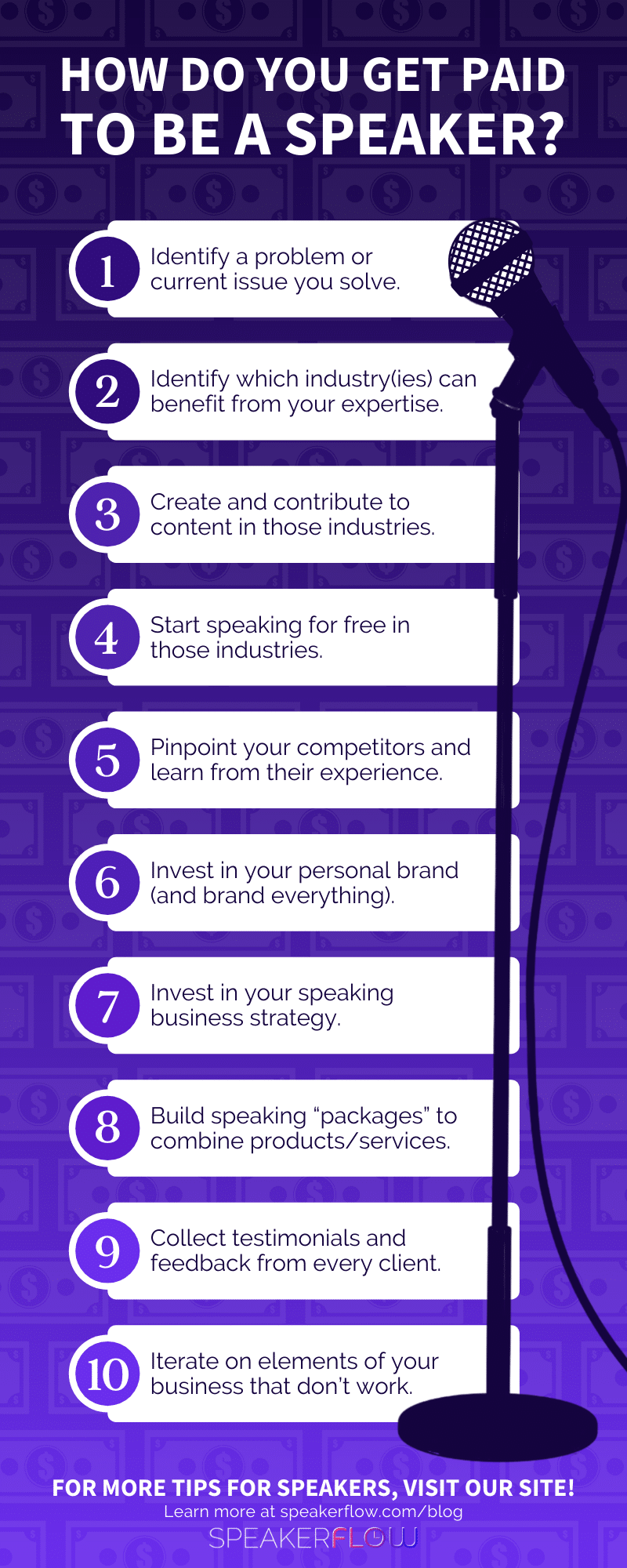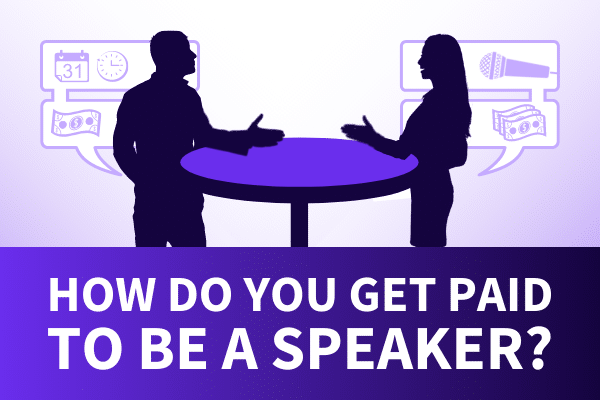Over the last two decades, public speaking has become dramatically more accessible, and an increasing number of channels have propelled people into the spotlight. Maybe you saw a speaker on the news, sharing their business insights. Maybe they were a politician, speaking through a social media live stream. Or maybe your local government hired a speaker for a community event. In any case, sharing content – including speeches – has never been easier. For many, this begs the question, “How do you get paid to be a speaker?”
The short answer is that paid speaking comes down to the value you provide for your audience. If you are able to solve a problem, encourage those listening, and ensure tangible results after you’ve left the stage, you’ll also be able to command a sizable fee for your time and effort.
With this in mind, this guide is all about getting past the point of “volunteer speaking” or speaking for free. Below, we’ll cover ten actionable steps you can take as you either launch a speaking business or give your existing business a boost. Either way, regardless of your speaking experience, check off these requirements and you’ll be booking paid speaking gigs at the drop of a hat. 👍
- Identify a problem or current issue you solve.
- Identify which industry(ies) can benefit from your expertise.
- Create and contribute to content in those industries.
- Start speaking for free in those industries.
- Pinpoint your competitors and learn from their experience.
- Invest in your personal brand (and brand everything).
- Invest in your speaking business strategy.
- Build speaking “packages” to combine products and services.
- Collect testimonials and feedback from every client.
- Iterate on elements of your speaking business that don’t work.
Identify a problem or current issue you solve.
The first step to answering, “How do you get paid to be a speaker?” is identifying your focus problem. As a speaker, it can be tempting to think that a good speech needs good stories. But, at the end of the day, your audience isn’t there to hear stories. Instead, they want to know why your story should matter to them. Why should they listen to it (beyond the “wow” factor)? What can they learn from it? How can they implement that learning in their own lives? What problem did you solve in your story that they also know from their own experience?
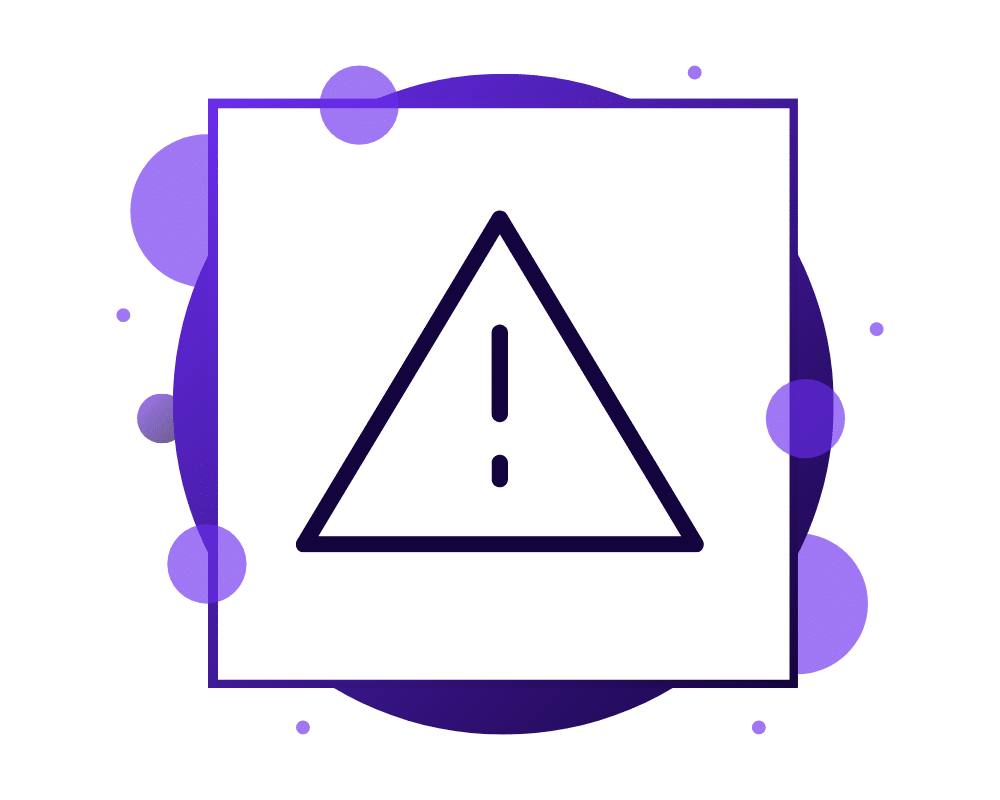
Each of these questions are important to consider. With or without stories, however, it’s imperative that you highlight the problem you solve. If you’re using stories to illustrate your point and connect with your audience, explain how the story connects to your main point. If you prefer not to use stories, that’s okay, too! Just be sure you clearly define what problem you solve, how you solved it, and how the audience can learn from your insights.
Remember: Speaking fees depend on value. If you tell a story, that’s nice, but it doesn’t truly serve the audience. If you highlight a problem and share a solution, on the other hand, you increase the value of your speech. This allows you to charge more (or charge, period, if you’re speaking for free).
Identify which industry(ies) can benefit from your expertise.
Step #2 of tackling the question, “How do you get paid to be a speaker?” is all about identification. Looking back at the problem – and solution(s) – you established, ask yourself, “Who is affected by this problem, and who can benefit from hearing my insights?”
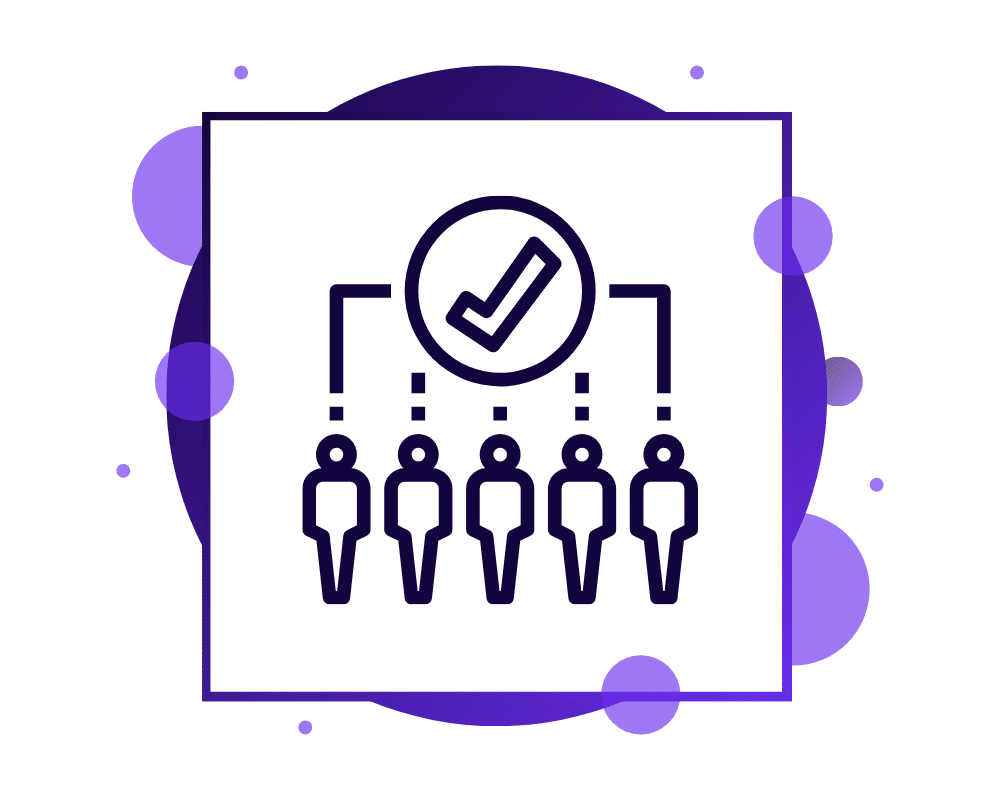
If your focus is narrow, look for industries or even specific professions for which it’s applicable. For instance, if the problem you chose in step #1 relates to entrepreneurialism, it probably won’t be relevant for corporate audiences or internationally-known companies. But it may be well-suited to audiences in higher education or small business circles. You may also be able to direct your attention to an even more specific subset within these groups, depending on your topic.
Conversely, if the problem you want to address in your speeches is wide-reaching, like gender inequality, for example, there are any number of audiences suited to your message. A few common examples include those in human resources, sales, and higher education. Though broad, each of these groups is specific enough that you can anticipate speaking events related to their profession.
In short, whether your problem is big or small, widely applicable or extremely specific, your job is to find which audience it affects most. From there, you can build your expertise within those industries or professional circles.
Create and contribute to content in those industries.
After refining your focus to a few key groups, the next step is establishing your authority within those groups, starting with content. Now more than ever, people across industries – and around the world – rely on content for motivation, instruction, and modernization of their personal and professional practices. After all, with a continually growing global population, change happens quickly, and winning out against industry competitors is often determined by who can adapt to change most quickly.

To position yourself as an expert in your target industries, your content must provide insights related to their changes. For instance, in corporate settings, two common problems are a lack of diversity in race and gender. So, your content could focus on addressing these changes by adjusting company cultures and hiring routines. It could also give voice to minority employees, allowing them to share changes they’d like to see in their workplace.
Whatever your focus industries, your content should follow the rule of “three A’s.” First, it should be applicable. If your content isn’t relevant to your audience or the current challenges they’re facing, they won’t be interested. Second, it should be actionable. Even if your content gets a ton of attention, it won’t make an impact unless it helps people make a difference in their lives.
And, lastly, it should be accessible. The more places you can share your content, the more likely your ideal customers will see it and the larger your following will be over time. Essentially, by sharing content, you create a positive feedback loop of value for your audience that builds your authority that then drives up the prices of your products/services. It takes time to build – no buts about it – but it always pays off.
Start speaking for free in those industries.
Step #4 behind, “How do you get paid to be a speaker?” is speaking for free. Although it sounds counterintuitive when you’re working towards paid gigs, free events give you the opportunity to gain speaking experience without the pressure of producing results for the event host. It also allows you to troubleshoot various aspects of your speaking setup so you can avoid them in the future.
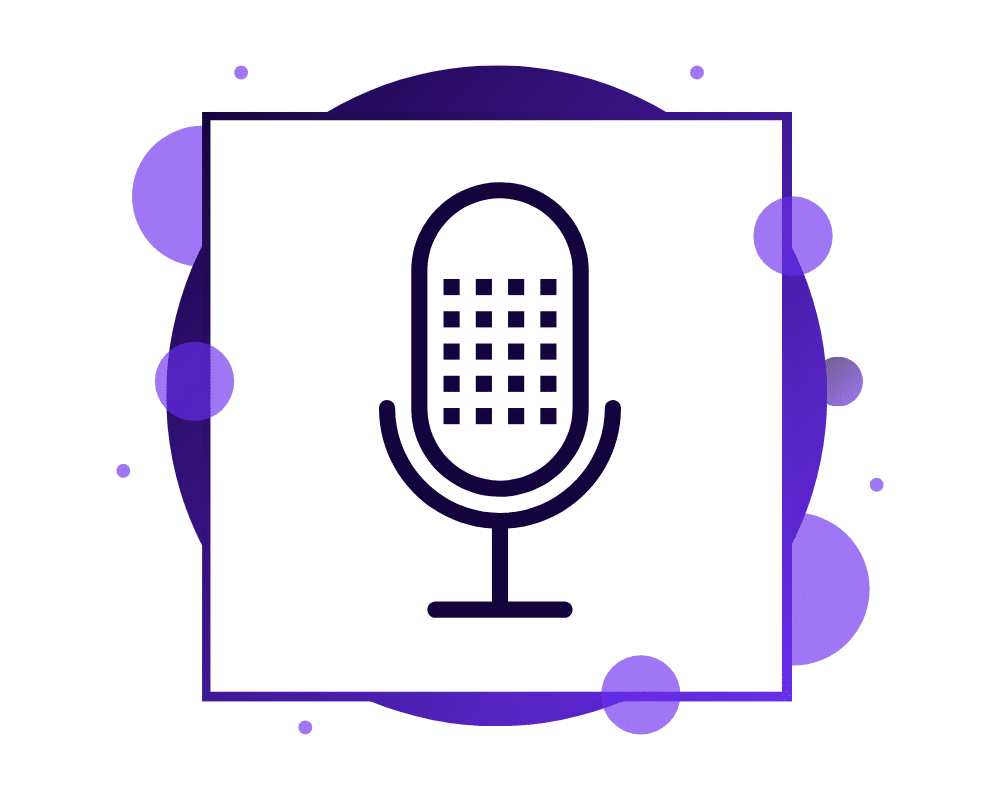
Does your presentation platform consistently work with event hosts’ setups, for example, or do you need to switch? Do your jokes resonate with audience members, or do you need to adjust them? What about your method for managing travel arrangements? Coordinating with your current, full-time job as you transition into speaking? Finding new speaking leads while delivering today’s speech?
All of these considerations are important to iron out before you dive into the “big leagues” of paid events. Especially in corporate settings, professional speaking demands outcomes, and, when you charge upward of $1,000 per event, ensuring the outcomes you promised in your contract is key. Thankfully, if you speak for free first, you have plenty of time to iron out the kinks. Then, by the time you begin charging for events, you’ll have proof of your skills, and there’ll be a happy ending for you, your clients, and your audience every time.
Pinpoint your competitors and learn from their experience.
The fifth step to answering, “How do you get paid to be a speaker?” focuses on your competition. As I’ve mentioned a few times, public speaking is one thing. But professional speaking (i.e. making a living through speaking) is another level of competition and skill. Take into account the added challenge of entrepreneurship, and starting a speaking business can seem like a monumental task.

Thankfully, if you’re unsure where to start – or how to adapt what you already have – speakers in your focus industries may already have the solution. For example, recommendations from other speakers can help you decide which CRM to use. Looking at other speakers’ branding materials can provide inspiration for your next brand update. You can even pull from things you dislike about other professional speaking practices so you can avoid competitors’ past mistakes.
Long story short, the old saying “Imitation is the sincerest form of flattery” may be cheesy, but it’s also true. Even if you’re well on your way to paid speaking, learning from your competitors can give you a headstart. Plus, with tools like the Speaker Intel Engine, finding those tips, tricks, and ideas is only a click away.
Invest in your personal brand (and brand everything).
The sixth step in answering, “How do you get paid to be a speaker?” is where your business comes to life. More specifically, once you’ve gained some speaking experience and found your footing in your focus industries, the natural progression is to leverage that experience into a personal brand.
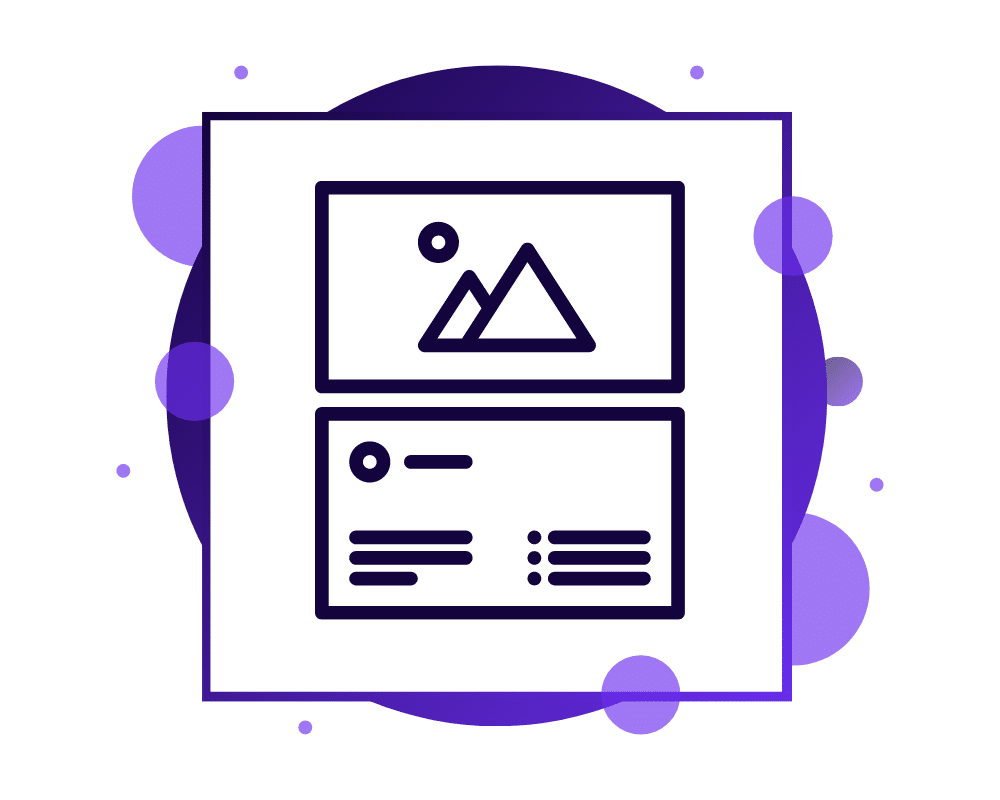
As speaking businesses go, personal branding can vary dramatically. On one hand, you can have an extremely modern brand, designed to allude to your consideration for the latest trends. This includes brands like those of Cassandra Worthy, Mel Robbins, and Ozan Varol, for example.
On the other hand, a personal brand doesn’t have to be extremely modern. If you’re more comfortable with classic design and simplicity, that’s more than okay, too. Just look at the brands of Dan Thurmon and Mark Hunter, and you’ll see that simple doesn’t have to mean boring (or inability to charge top dollar).
Ultimately, whether you opt for a visually striking or relatively straightforward personal brand, the most important requirement to meet is brand authenticity. Choosing colors, fonts, and design elements that reflect your genuine personality will not only give potential clients another way to relate to you. It will also suggest a polished and well-thought-out professional persona. That way, even before meeting you, people will be able to tell that you know your stuff and your speeches are worth every penny.
Invest in your speaking business strategy.
After building your personal brand, the next – and considerably larger – task is building the speaking business behind it. Like a recipe, the final product of your business is only as valuable as the ingredients put in beforehand. In other words, if you don’t invest the necessary time, money, and energy to build a well-oiled machine behind your business facade, the quality of your products and services will be lower. Conversely, if you put care into your business decisions like you would for your clients, you’ll be more productive and profitable long-term. What’s not to love about that, right?
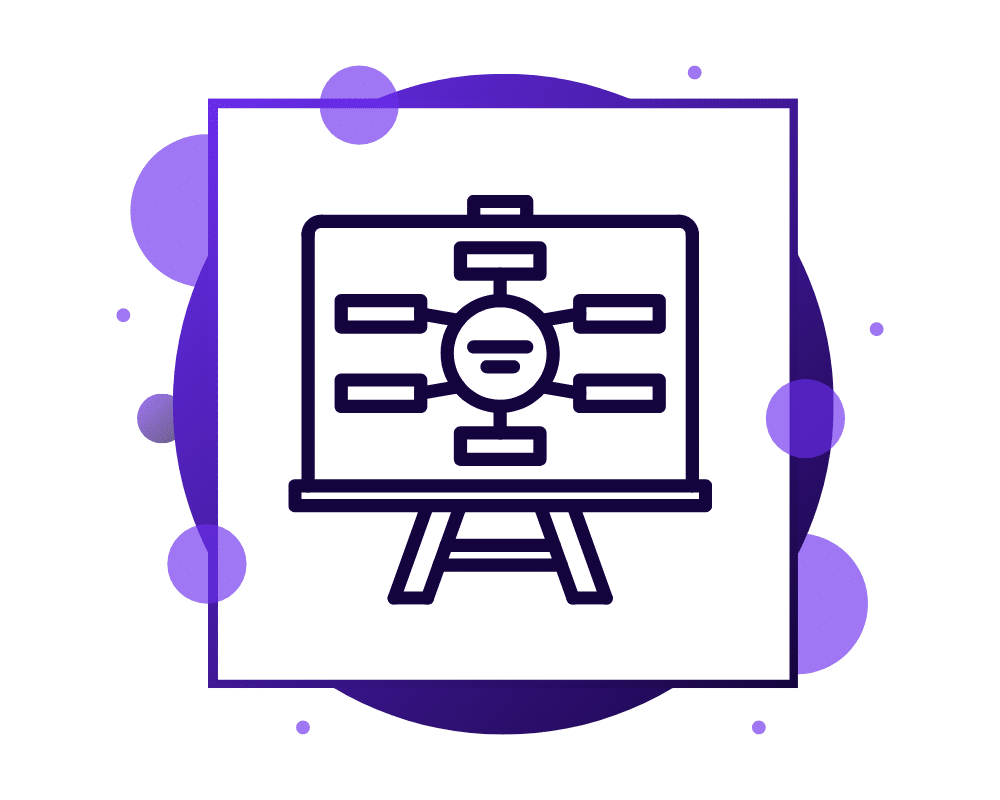
To do this, there are a few areas of your business on which to focus.
- Technology: What tools and applications will you use to keep your business organized and, by extension, ensure that you serve every client to the best of your ability?
- Systems: How will your tools and applications work together to provide a seamless work experience for you and a seamless customer experience for your clients? How will your routines work with your tech systems to do the same?
- Standards: How will you hold yourself and members of your team accountable? What guidelines, “check-in” reminders, or new routines will you implement to ensure that you consistently improve on the aforementioned areas of your business?
In short, if you want to charge for your speaking programs, you have to devote as much energy and intention behind the scenes as you do onstage. Even if you’re a solopreneur, there’s no better argument for why a business should hire you than the strength of the business you built yourself.
Build speaking “packages” to combine products and services.
Besides value, another thing to keep in mind when working towards paid speaking gigs is convenience. When pitching potential clients, they don’t just want to know that you’re credible and capable of solving their problem(s). They also want to know that hiring you will make their life easier. For live and virtual events, this means that working with you is as stress-free and well-coordinated as possible.

One easy way to make this happen – and show how easy you are to work with even before they’ve hired you – is to build your products and services into speaking “packages”. Each package can include the offerings of your choice, provided you group them in ways that benefit your potential clients. Your least expensive package, for example, could include a speaking program alone. Then, the next “tier” up could include a speaking program, three social media videos (for event promotion), and a post-event dinner with executives.
What you choose to include in each package is entirely up to you, but be sure to structure each tier around your clients’ needs. This allows a potential client to quickly and easily review their options and choose one that fits the demands of their event. Plus, once they’ve seen the perfect package, it’ll be easier for them to internally justify the price, considering the guesswork is cut out for them.
Collect testimonials and feedback from every client.
On the flip side, step #9 behind, “How do you get paid to be a speaker?” takes place after each event is over. As you might expect, social proof plays a huge role in the speaker sales process. After all, every testimonial is proof of your speaking skills and the positive post-event results of your work. Consequently, glowing testimonials – especially lots of glowing testimonials – make hiring you a no-brainer for potential clients.
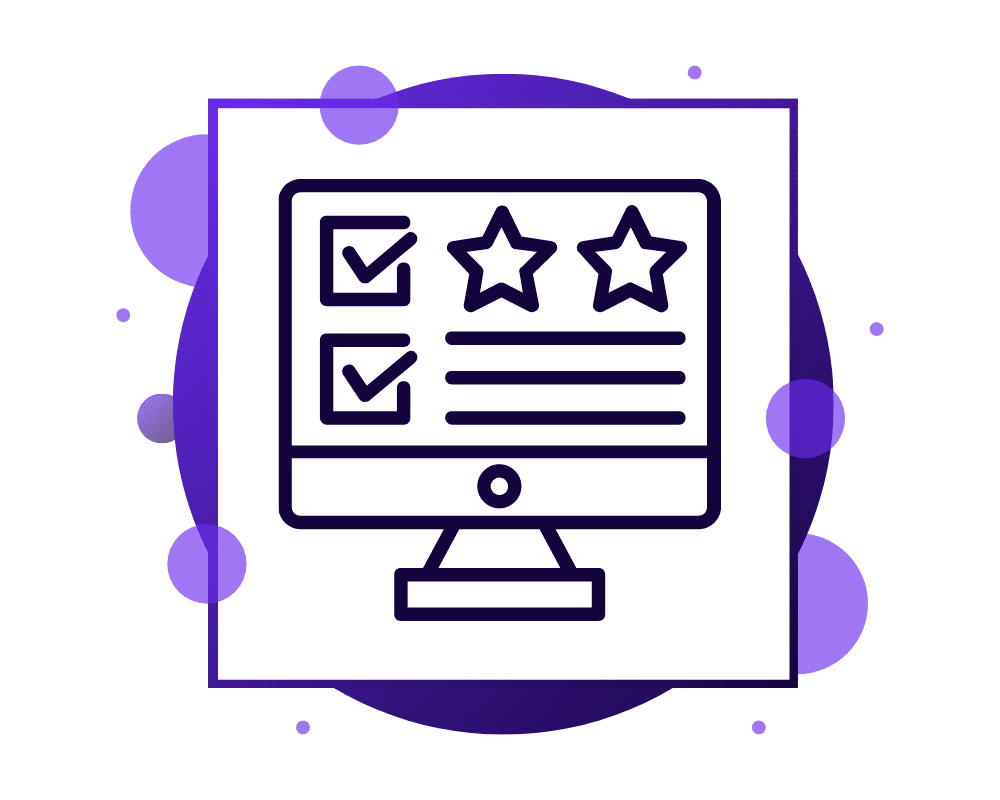
To make the most of this opportunity, keep in mind the following tips before and after your future speaking engagements.
- Wait until a day or two after the event to email your testimonial request. Asking immediately after the event can come off as pushy.
- Build a testimonial request into your standard sales process. It can be an automatic reminder on your phone, in your CRM – whatever helps you remember best.
- Ask for video testimonials when possible. At a minimum, written testimonials are just fine, but video testimonials are exceptionally engaging when shared on your website or social channels.
- Ask for testimonials on your speaking business’s Facebook page and Google listing. They can be the same review, word-for-word, but the more places you can display reviews, the better.
Pro Tip: When asking a client for a testimonial, also ask if they have any feedback for you. Each client is different. But, if you can improve your offerings, speaking style, or preparatory process based on the average requests of your past clients, all of your future – and potential – clients will benefit.
Iterate on elements of your speaking business that don’t work.
Last but not least, if you want to truly answer, “How do you get paid to be a speaker?” you must learn to iterate. As any experienced professional speaker will tell you, complacency breeds failure. Even if today you’re a shining star in your focus industries, failing to adapt will inevitably allow other aspiring speakers to outshine you over time. There’s also the potential for today’s business problems to snowball into larger ones. A few sloppy sales pitches, for example, can become a habit, which then reduces your success rate over time and, with it, your revenue.
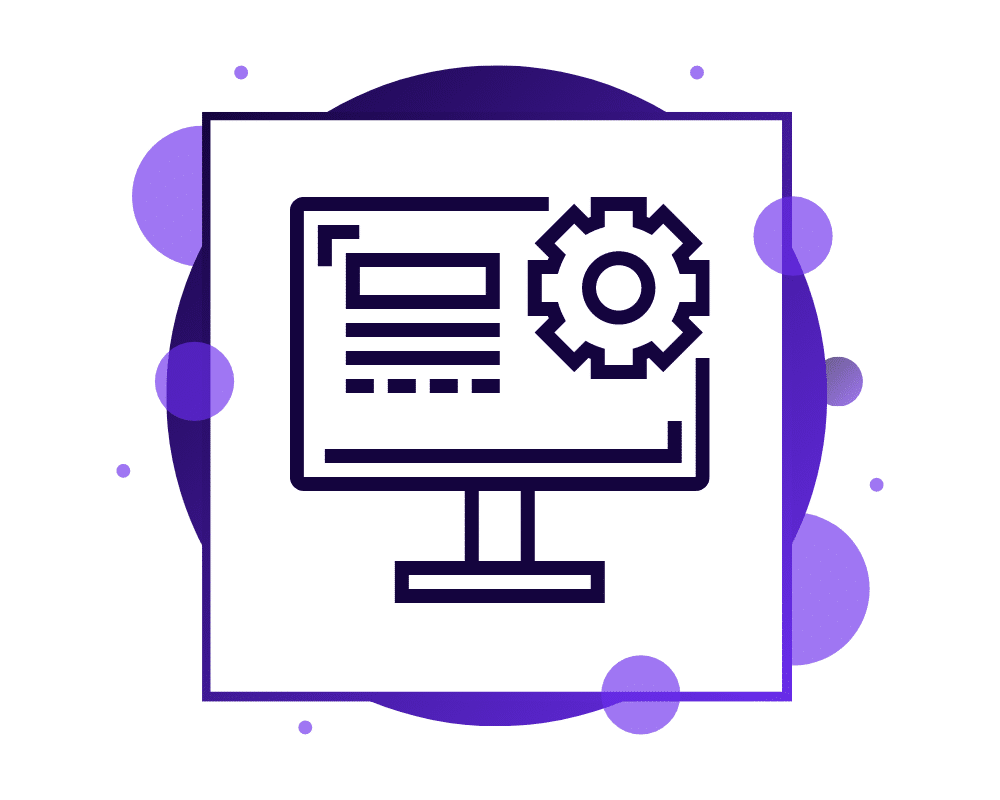
Conversely, staying on top of problems in your business is guaranteed to pay off. If you notice your CRM isn’t working well for you, switching to a new one will save you time and money. If you notice the rise of virtual speaking and adapt to take advantage of the trend, you’ll stand out from your competitors.
As John C. Maxwell put it, “If you are willing to change your thinking, you can change your feelings. If you change your feelings, you can change your actions. And changing your actions – based on good thinking – can change your life.” Keep this in mind as you follow this process and build your speaking fees over time, and you’re sure to succeed (and get paid accordingly). 👌
For more information about becoming a professional speaker, check out our previous guide, “How To Become A Professional Speaker: The Beginner’s Guide.”
Additionally, for business-specific advice for speakers, visit our speaking business breakdown post: “How To Start A Speaking Business: The Ultimate Guide.”
